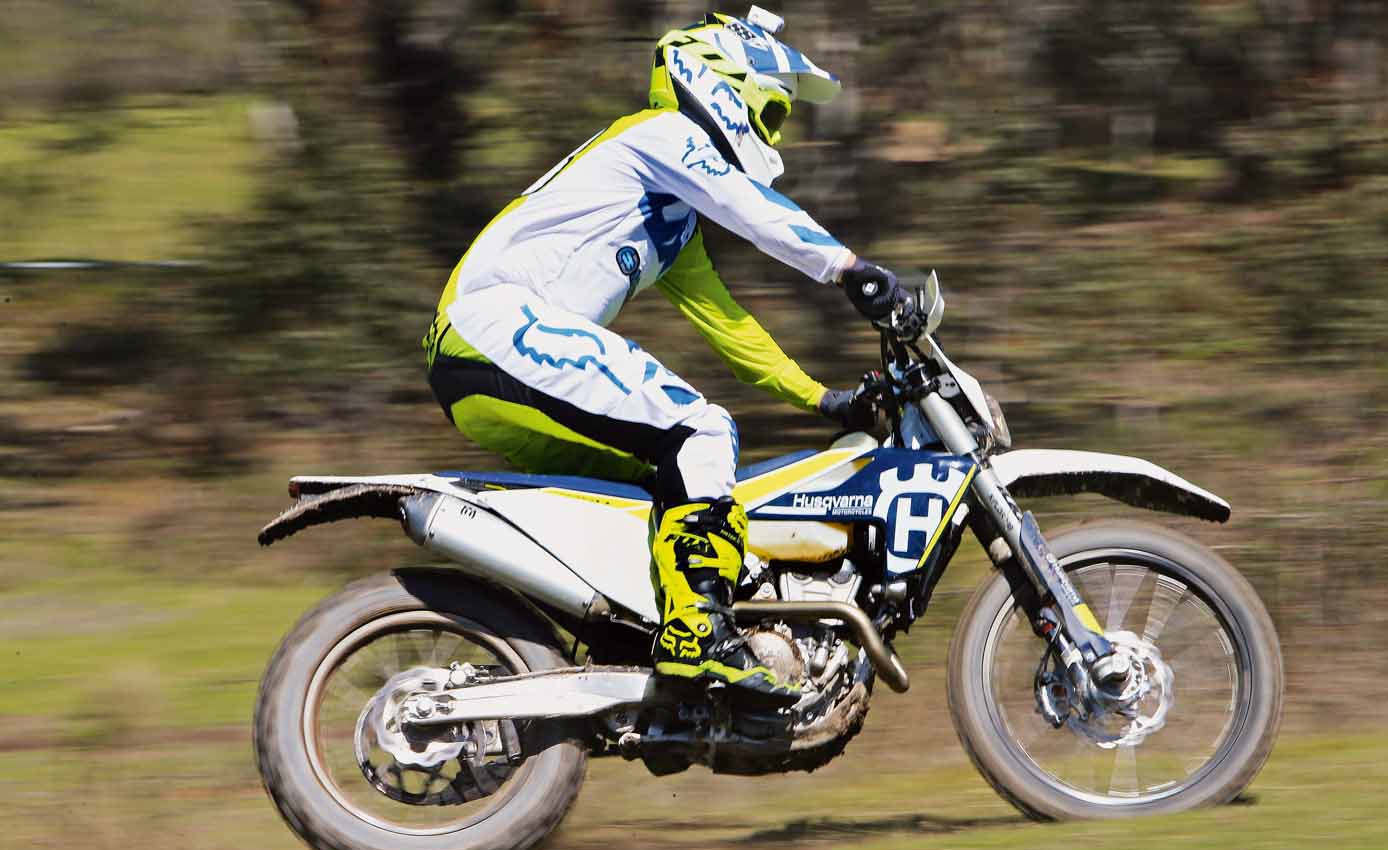
It’s a very important skill to have as a rider but slowing the bike down from high speed can be tricky
WORDS SHANE BOOTH PHOTOGRAPHY HUSQVARNA
BRAKING MARKER
The very first step to worry about when you need to slow the bike down is choosing when to do so. Choosing the right moment to get off the throttle and on the brakes is critical; if you’re slowing for a corner it’s the difference between nailing your line in the turn or shooting off the outside of the trail.
BODY POSITION
To brake efficiently, it’s important to get your body in the correct position before you apply the brakes. The weight of the rider and bike is going to transfer forward when you apply the brakes so it’s important to anticipate this with your body position and set yourself to the rear of the bike. As you lean back, make sure you leave some clearance between the bike and your butt; if you don’t, the first braking bump will catapult you straight over the bars. If you apply the brakes before getting yourself in the correct position your weight will get thrown forward and you won’t be able to brake hard at all. You also increase the chance of a crash due to the amount of weight that will be loaded onto the front wheel. Always keep a bend in your knees and elbows so you can work with the bike as you deal with braking bumps.
BRAKE APPLICATION
The front brake is going to provide the majority of your stopping power simply because, as you brake, weight transfers to the front wheel and increases your traction, which in turn allows you to brake harder. It will take some practice to become confident using your front brake but it’s well worth it; you’ll never stop a bike well without it. Always think of your front-brake use as a squeeze, not a grab, and that will help. Even though the rear brake provides less braking power it’s still an important part of slowing the bike down. They key to your rear brake use is to always keep the rear wheel turning; as soon as it locks the bike loses stability. You’re also at a higher risk of the rear end stepping sideways when the wheel is locked. If you feel the rear wheel lock, just ease off the brake pedal to get it turning again. You also have to factor in engine braking if you ride a four-stroke; as the engine decelerates it will help slow the bike. When you’re used to it, it’s handy in situations where you only need a slight decrease in speed.
GEAR SELECTION
While you’re braking, there’s quite a bit going on so it’s easy to forget about your gear selection. It’s not unusual to see a rider get through the braking area on the entry to a turn, then go to apply throttle and hear the bike a couple of gears too high to drive out. It’s closely followed by some frantic clutch use or stomping on the gear shifter to get the bike to fire up. The key is remembering to shift down through your gears while you’re braking so that when you’re ready to get back on the gas you’re in the correct gear and ready to go. It’s a good idea to use the clutch for these gear changes, too: it allows you to ease the clutch out after a downshift and avoid a compression lock-up of the rear wheel if you’ve shifted a little early. Having a finger over the clutch is also handy to avoid stalling the bike if you get a little heavy on the rear brake. If you look closely at this shot, you can see I have the clutch lever in slightly to avoid a stall if the rear wheel locks on a sharp bump. Don’t engage the clutch totally — it’s not necessary and you’ll lose any engine brake if you do that.
LINE CHOICE
Where you choose to put the bike on the trail makes a huge difference to how hard you can brake and slow the bike down. Sometimes the ideal line for your corner entry can be rough or slippery and you always have to factor in keeping left. It might not be the best line into the turn but it’s always worth giving up a little time to remain safe from oncoming vehicles.
